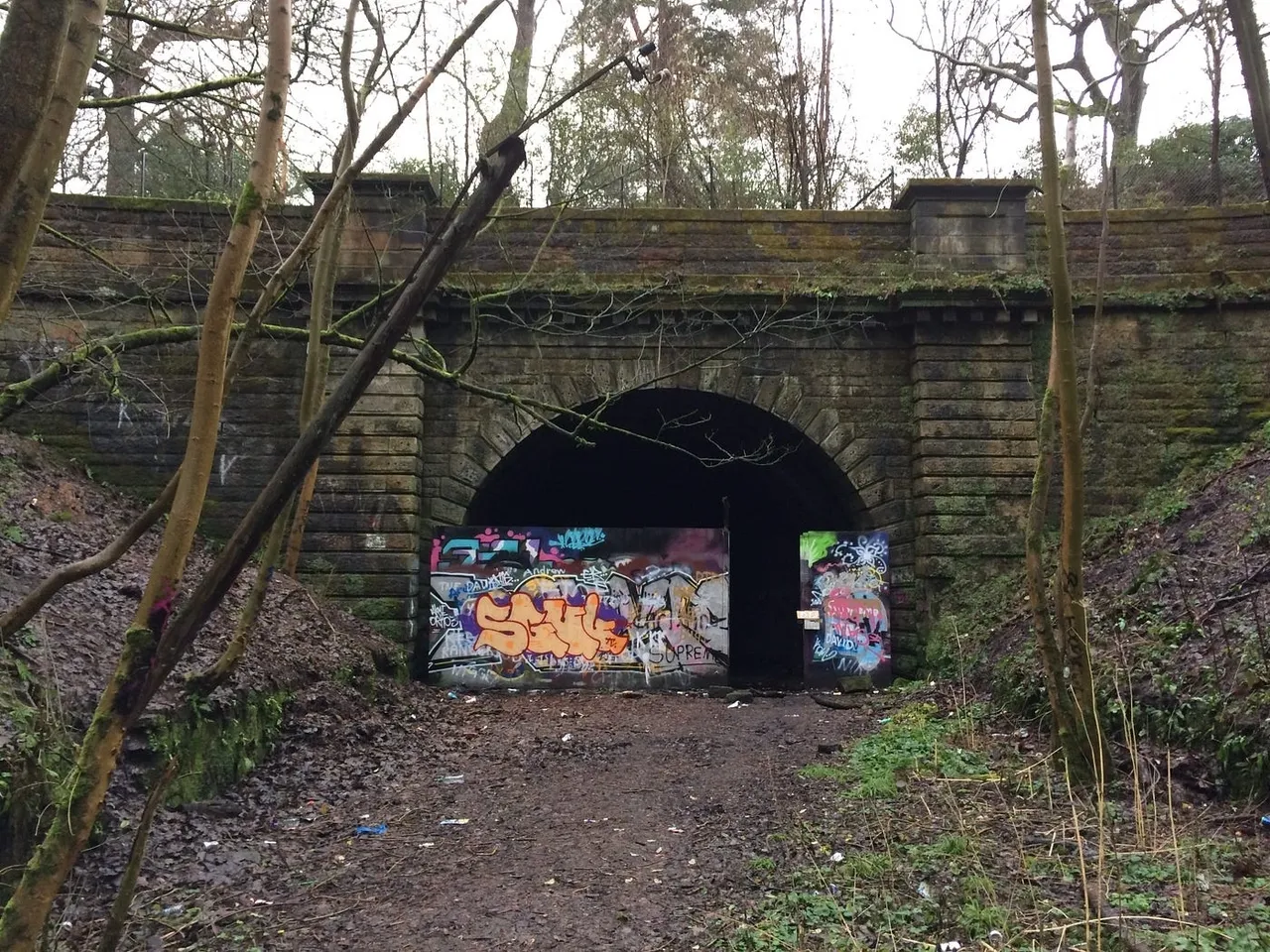Tucked away near the bustling 19th-century Botanic Gardens in Glasgow lies a hidden gem that few tourists stumble upon: an abandoned Victorian railway station that has silently witnessed the passage of time for decades. Originally unveiled by the Glasgow Central Railway in 1896, the Botanic Gardens railway station had its fair share of interruptions, shuttering temporarily during the Great War due to financial limitations, and later, permanently, as World War Two loomed on the horizon.

The main station building was located above ground at the edge of the gardens. Notable for having two tall chimneys topped by onion domes, it was often referred to as “The Kremlin” by locals. A gatehouse, which still stands at the entrance to the gardens, gives an idea of what this building would have looked like. After their closure, the platform and tunnels were left to decay, but the station building became a local landmark. It was converted into a space for numerous local businesses, most notably a café called The Silver Slipper and a nightclub called Sgt Pepper’s.

Tragedy struck on the evening of March 22, 1970, during a lively battle of the bands contest at Sgt Pepper’s. A fire erupted, suspected to have been ignited by a smoldering cigarette left in the attic space. Regrettably, the café owner’s dog was the sole casualty of the inferno. The towers, deemed unstable by firefighters, had to be dismantled, and the remaining structure was soon demolished.

Regrettably, the station and its railway line never gained much favor with the public, largely due to the grimy, smoke-filled conditions passengers had to endure. Street trams emerged as a cleaner, more convenient alternative for many commuters. As patronage steadily dwindled, the station closed its doors permanently in 1939. The fate of the line was sealed in 1964 when it was deemed financially unviable and ceased operations altogether.

In subsequent years, the tunnels and platforms became a haunt for local explorers and graffiti artists. Eventually, access was closed off, leaving a time capsule of sorts that nature is now slowly reclaiming (appropriately enough, given the location). Today, the platforms can still be viewed from above through open air vents in the botanic gardens. The vents originally allowed smoke from steam trains to escape the passenger-packed platforms. Nowadays they act as a window to the past, offering the curious a peek into a long-forgotten vestige of a bygone era.
For the next 25 years, the subterranean facility lingered on as a ghost station, acting as a throughway for trains that never stopped. A surface building was demolished following a fire in the 1970s, beneath which the subterranean space hides in a state of graffiti-covered disrepair. Clearly visible through air vents near the entrance to the gardens, the abandoned station is now home to a wilder sort of nature than the manicured grounds that it once brought passengers to

As the sun dips below the horizon, casting a warm glow over Glasgow’s Botanic Gardens, we reluctantly bid adieu to a day brimming with the vibrant colors and captivating scents of nature. Whether you’re in pursuit of serene moments, encounters with rare plant species, or simply a leisurely walk through lush greenery, the Botanic Gardens are a testament to Glasgow’s dedication to nurturing the wonders of the natural world. Prepare for your visit, and allow the harmonious chorus of blossoms and foliage to weave unforgettable memories in this urban sanctuary.

Also Recommended:Oradour-sur-Glane: Echoes of Silence, Whispers of Resilience…

